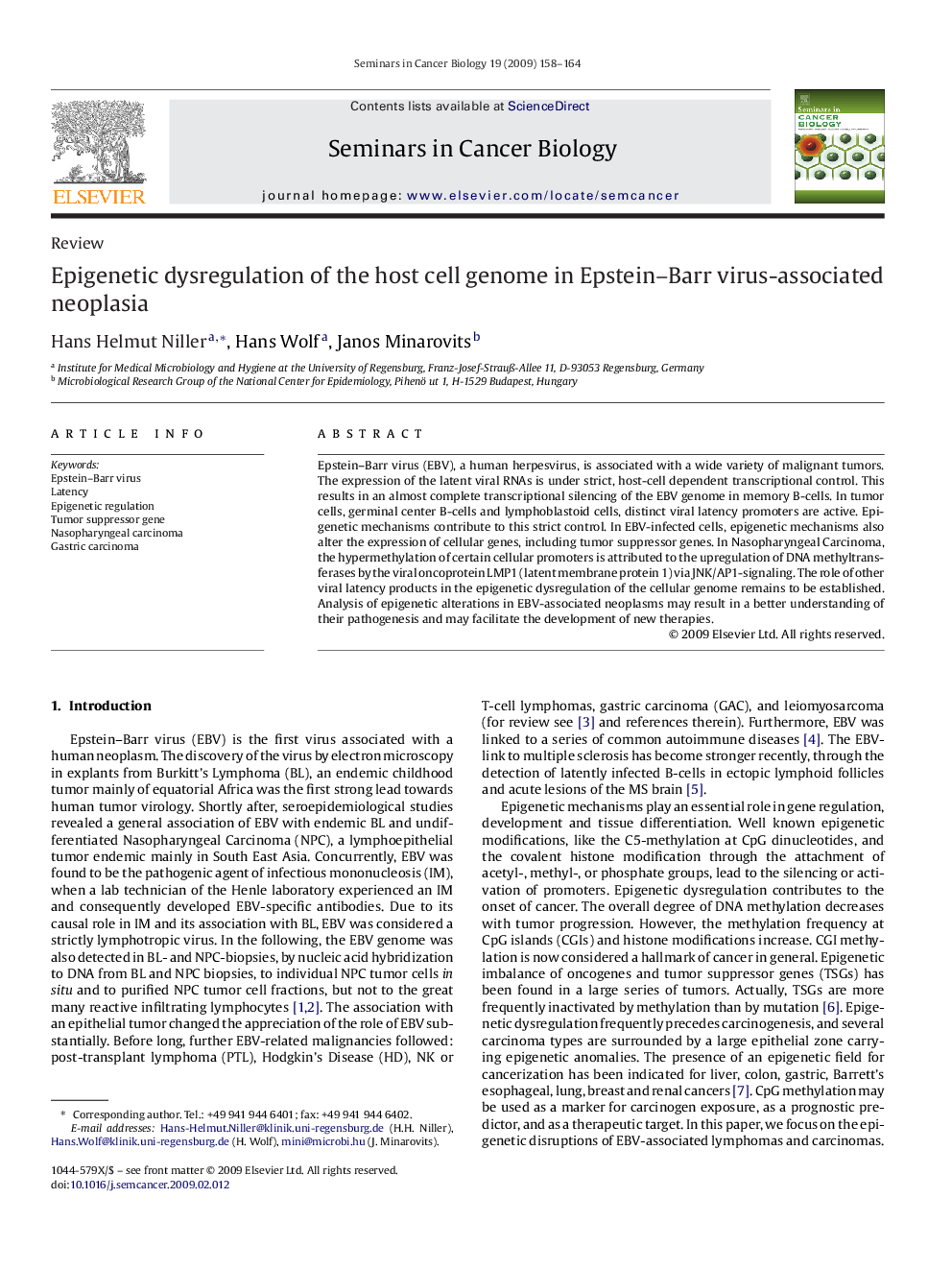| Article ID | Journal | Published Year | Pages | File Type |
|---|---|---|---|---|
| 2024015 | Seminars in Cancer Biology | 2009 | 7 Pages |
Epstein–Barr virus (EBV), a human herpesvirus, is associated with a wide variety of malignant tumors. The expression of the latent viral RNAs is under strict, host-cell dependent transcriptional control. This results in an almost complete transcriptional silencing of the EBV genome in memory B-cells. In tumor cells, germinal center B-cells and lymphoblastoid cells, distinct viral latency promoters are active. Epigenetic mechanisms contribute to this strict control. In EBV-infected cells, epigenetic mechanisms also alter the expression of cellular genes, including tumor suppressor genes. In Nasopharyngeal Carcinoma, the hypermethylation of certain cellular promoters is attributed to the upregulation of DNA methyltransferases by the viral oncoprotein LMP1 (latent membrane protein 1) via JNK/AP1-signaling. The role of other viral latency products in the epigenetic dysregulation of the cellular genome remains to be established. Analysis of epigenetic alterations in EBV-associated neoplasms may result in a better understanding of their pathogenesis and may facilitate the development of new therapies.
